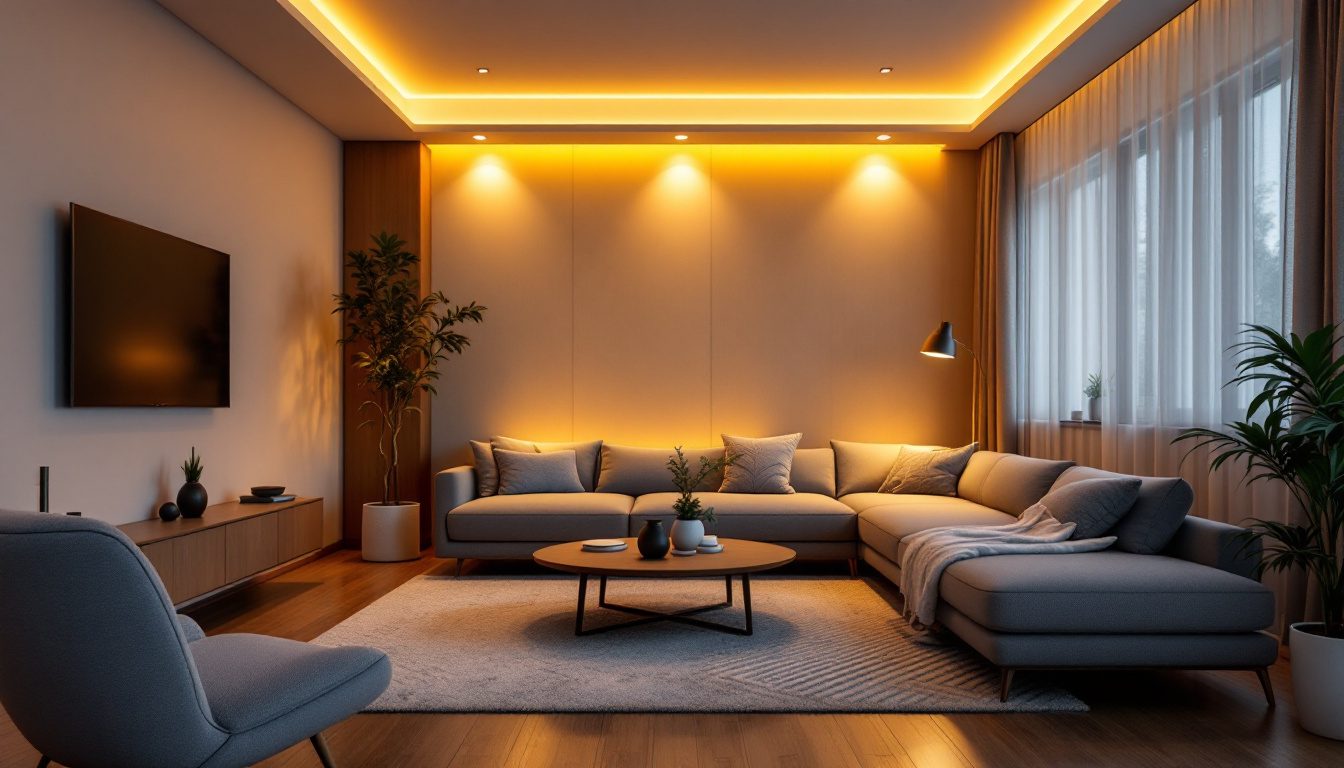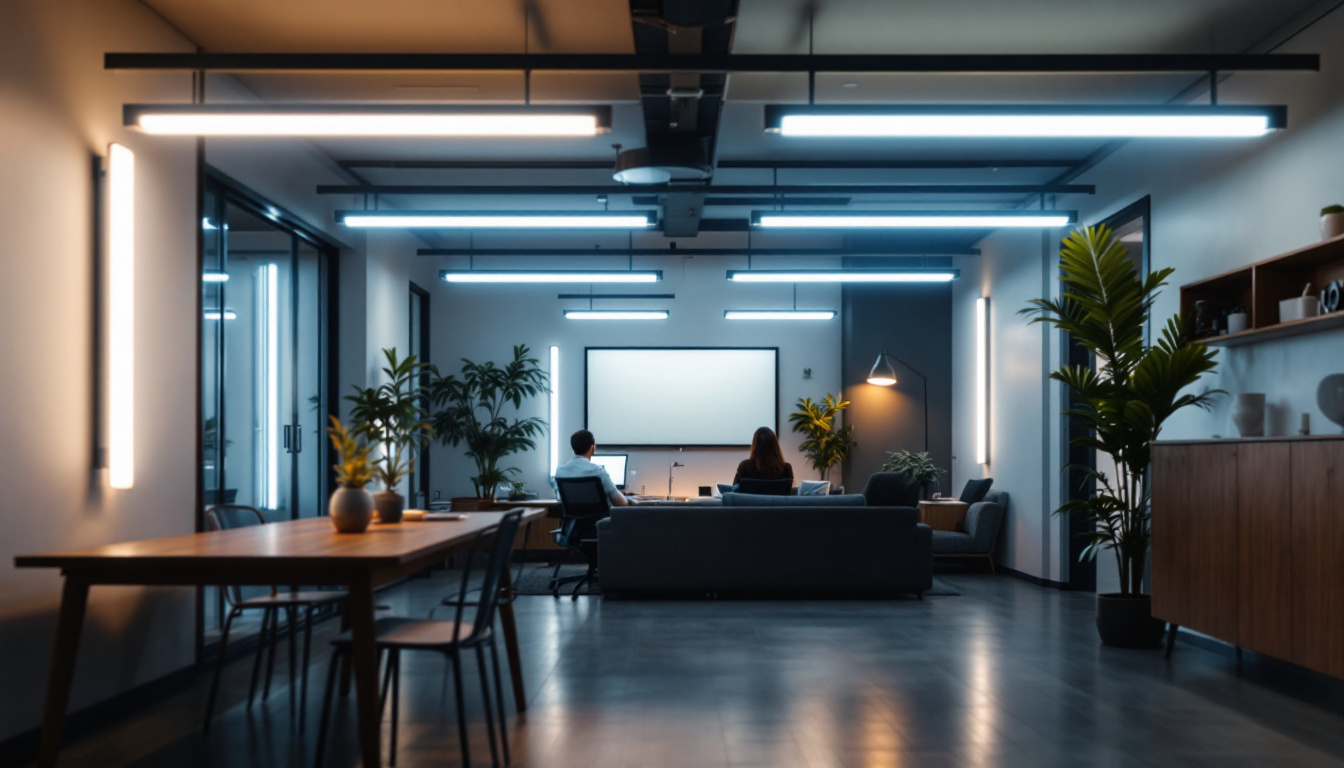

Lighting plays a crucial role in any workspace, significantly affecting productivity, mood, and overall well-being. For lighting contractors, understanding the nuances of light temperature is essential for creating optimal environments. This article explores the ideal light temperatures for various work settings, weighing the pros and cons to help contractors make informed decisions.
Light temperature, measured in Kelvin (K), refers to the color appearance of the light emitted by a bulb. It ranges from warm (lower Kelvin values) to cool (higher Kelvin values). For lighting contractors, recognizing these differences is vital when designing lighting solutions for clients.
Warm light, typically below 3000K, emits a soft, yellowish hue. It is often associated with comfort and relaxation, making it ideal for residential spaces, restaurants, and lounges. The inviting nature of warm light can enhance the atmosphere, encouraging social interaction and leisure.
However, while warm light is cozy, it may not be suitable for all work environments. In settings that require high concentration and attention to detail, such as offices or workshops, warm light can lead to fatigue and reduced productivity. Additionally, the psychological effects of warm light can influence mood; studies have shown that environments bathed in warm light can evoke feelings of warmth and safety, which is why many cafes and homes opt for this lighting to create a welcoming ambiance.
Neutral light, ranging from 3000K to 4000K, strikes a balance between warm and cool tones. This type of lighting is versatile and often used in office environments, retail spaces, and educational institutions. It provides a clear, bright illumination that helps reduce eye strain and enhances focus.
Neutral light is particularly beneficial in environments where tasks require color accuracy, such as design studios or art galleries. However, excessive exposure to neutral light can sometimes lead to a sterile atmosphere, which may affect creativity and comfort. To mitigate this, incorporating elements of warm light through accent lighting or decorative fixtures can create a more inviting space, allowing for a blend of productivity and comfort that caters to both employees and clients alike.
Cool light, typically above 4000K, emits a bluish-white tone that is invigorating and energizing. This type of lighting is often favored in industrial settings, hospitals, and laboratories, where clarity and alertness are paramount. Cool light can increase productivity and reduce feelings of fatigue, making it an excellent choice for high-energy environments.
On the downside, cool light can feel harsh and unwelcoming in spaces meant for relaxation or socialization. Its intensity may lead to discomfort if not balanced with softer lighting options. Additionally, the overuse of cool light in living spaces can disrupt circadian rhythms, potentially affecting sleep patterns. Therefore, it is essential to consider the time of day and the intended use of a space when selecting lighting, ensuring that the environment remains conducive to both productivity and well-being. By strategically layering different types of lighting, one can create a dynamic atmosphere that adapts to the needs of its occupants throughout the day.
Lighting contractors must consider how different light temperatures influence productivity. Research indicates that the right lighting can enhance focus, reduce errors, and improve overall job satisfaction. Understanding the psychological effects of light temperature can guide contractors in making informed recommendations to clients.
Light temperature has a profound impact on mood. Warm light can create a calming environment, fostering relaxation and comfort. This is particularly important in spaces where employees need to recharge, such as break rooms or lounges. In contrast, cool light can stimulate alertness and motivation, making it suitable for workstations where concentration is key.
Contractors should also consider the circadian rhythm when selecting light temperatures. Exposure to cooler light during the day can help regulate sleep patterns, promoting better health and productivity. Conversely, warm light in the evening can signal the body to wind down, contributing to improved sleep quality. Additionally, studies have shown that employees who work in environments with appropriate light temperatures report higher levels of satisfaction and engagement, which can lead to lower turnover rates and a more stable workforce.
Different tasks require different lighting conditions. For instance, detailed work such as drafting or assembly benefits from cooler, brighter light to enhance visibility and accuracy. On the other hand, creative tasks may thrive in warmer light that encourages relaxation and innovation.
Lighting contractors should assess the specific needs of each workspace and tailor their lighting solutions accordingly. This may involve using a combination of light temperatures to create a dynamic environment that supports various activities throughout the day. Furthermore, incorporating adjustable lighting systems can empower employees to customize their workspaces, allowing them to choose the light temperature that best suits their individual preferences and tasks. This flexibility not only enhances productivity but also fosters a sense of ownership and comfort in the workplace, ultimately leading to a more engaged and motivated team.
While understanding the benefits of each light temperature is crucial, it is equally important to recognize their drawbacks. Each type of lighting has its place, and contractors must weigh these pros and cons when designing lighting systems.
When selecting the appropriate light temperature, contractors must consider the specific requirements of each work environment. Different settings have unique needs that can significantly influence the effectiveness of lighting solutions.
In office environments, a combination of neutral and cool light is often ideal. Neutral light can create a balanced atmosphere, promoting focus and reducing eye strain, while cool light can enhance alertness during peak working hours. Incorporating adjustable lighting options allows employees to customize their workspace according to their preferences, further enhancing productivity.
For retail and hospitality settings, warm light is often preferred to create an inviting atmosphere. Customers are more likely to linger in spaces that feel cozy and welcoming. However, it is essential to balance this with adequate task lighting in areas where employees need to focus, such as checkout counters or kitchens.
In industrial and laboratory environments, cool light is typically favored due to its clarity and ability to enhance focus. Proper lighting is critical for safety and precision in these settings. Contractors should ensure that the lighting design minimizes shadows and glare, providing a clear view of work surfaces and equipment.
As technology advances, lighting contractors have access to innovative solutions that can enhance the effectiveness of their designs. Smart lighting systems, tunable white lighting, and LED technology offer exciting possibilities for creating dynamic work environments.
Smart lighting systems allow for customizable lighting solutions that can adapt to the needs of the workspace. These systems can be programmed to adjust light temperature and intensity based on the time of day or specific tasks. This flexibility can enhance productivity and comfort for employees, making it an attractive option for contractors.
Tunable white lighting systems enable users to adjust the color temperature of the light throughout the day. This feature can mimic natural daylight, helping to regulate circadian rhythms and improve overall well-being. By incorporating tunable white lighting, contractors can create environments that support both productivity and comfort.
LED technology has revolutionized the lighting industry, offering energy-efficient solutions that last longer and provide better quality light. LEDs are available in various color temperatures, making them suitable for diverse applications. Contractors can leverage this technology to create tailored lighting solutions that meet the specific needs of their clients.
Choosing the perfect light temperature for work environments is a critical consideration for lighting contractors. By understanding the pros and cons of warm, neutral, and cool light, contractors can design effective lighting solutions that enhance productivity and well-being. Tailoring lighting to the specific needs of different workspaces, along with leveraging innovative technologies, can lead to successful outcomes for both contractors and their clients.
Ultimately, the right lighting can transform a workspace, making it more functional, inviting, and conducive to productivity. As the demand for quality lighting solutions continues to grow, contractors who prioritize understanding light temperature will be well-equipped to meet the diverse needs of their clients.
Ready to elevate your lighting projects with the perfect light temperatures? At LumenWholesale, we provide lighting contractors like you with the highest quality, spec-grade lighting products at prices that can’t be beaten. Say goodbye to local distributor markups and hello to a vast selection of reliable, high-performance lighting that meets the most stringent industry standards. Plus, with the convenience of free shipping on bulk orders, you can secure premium lighting at the best value — all without hidden fees or compromises. Don’t miss out on the ideal combination of quality, affordability, and convenience. Wholesale Lighting at the Best Value is just a click away. Transform your workspaces with LumenWholesale today.

Discover the pivotal role Sunpark Electronics plays in modern lighting installations.

Discover the ultimate guide to LED replacement can lights, covering everything from installation tips to energy-saving benefits.

Discover how LED high bay fixtures can revolutionize your lighting projects and elevate your business.

Discover the ultimate guide for lighting contractors on LED in tube technology.
Get notified when NEW deals are released.
Optimize your budget with wholesale discounts.
Only top-quality, specification-grade lighting products.
No additional costs at checkout - what you see is what you pay.
We understand the unique needs of contractors.